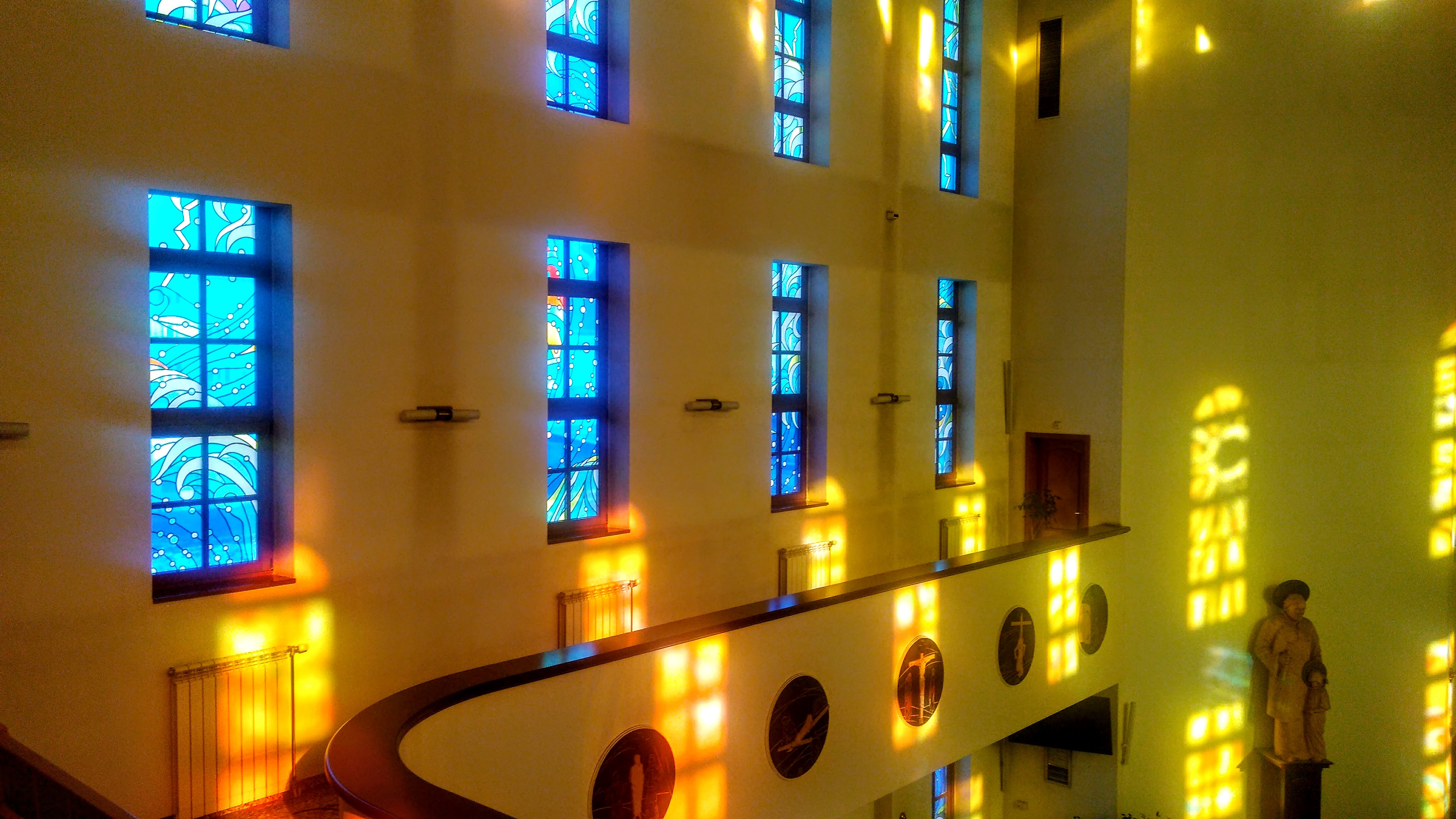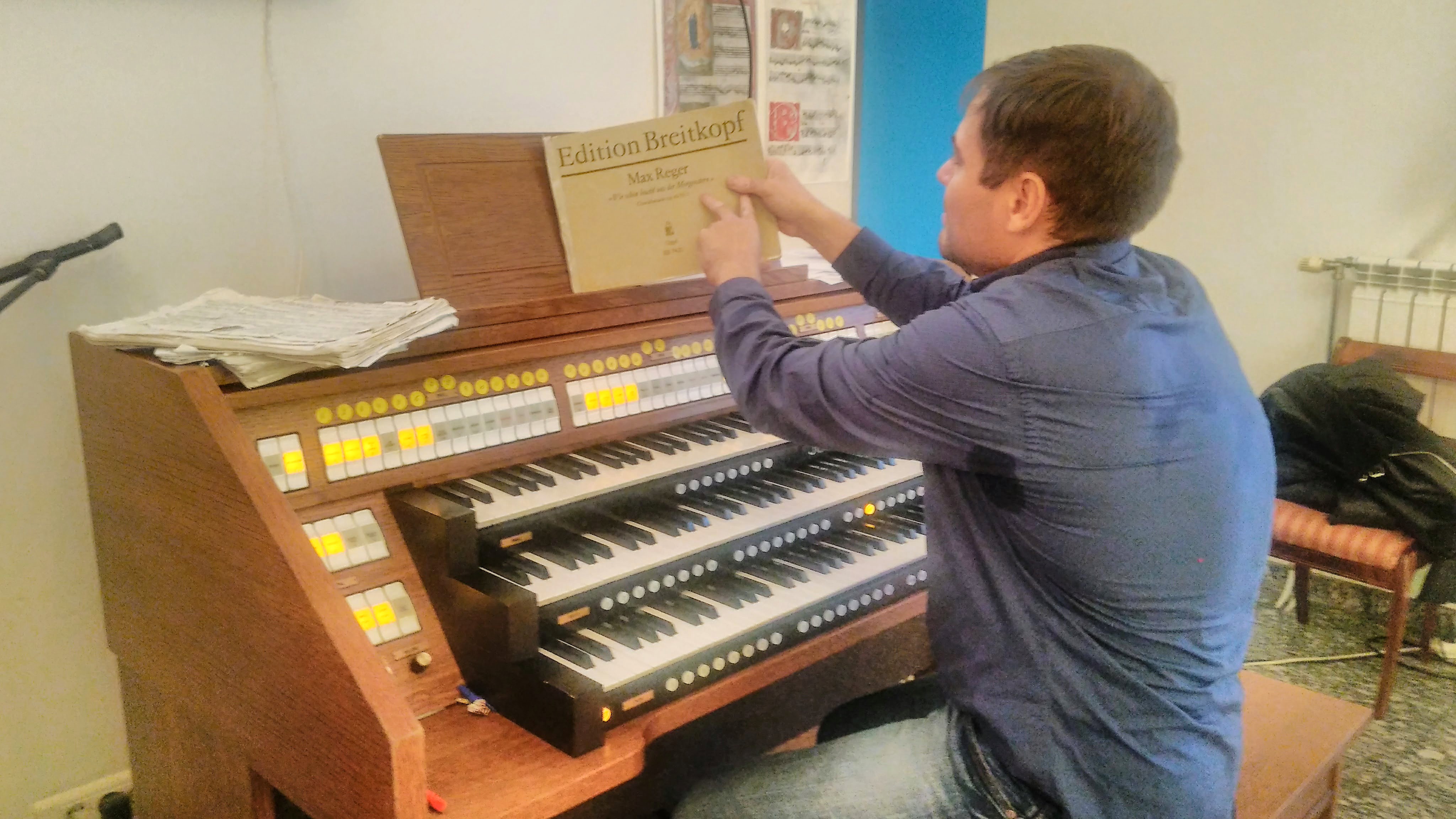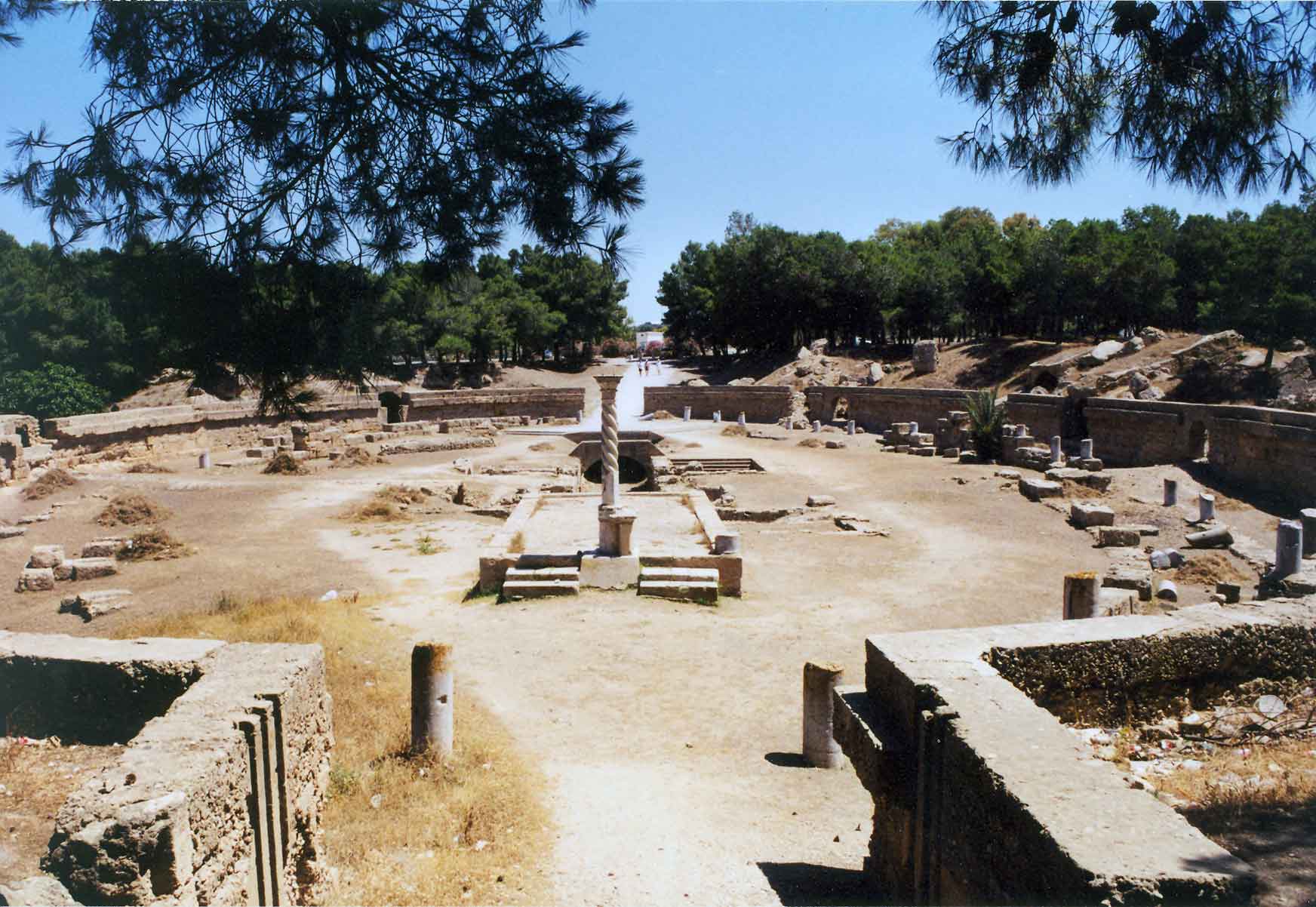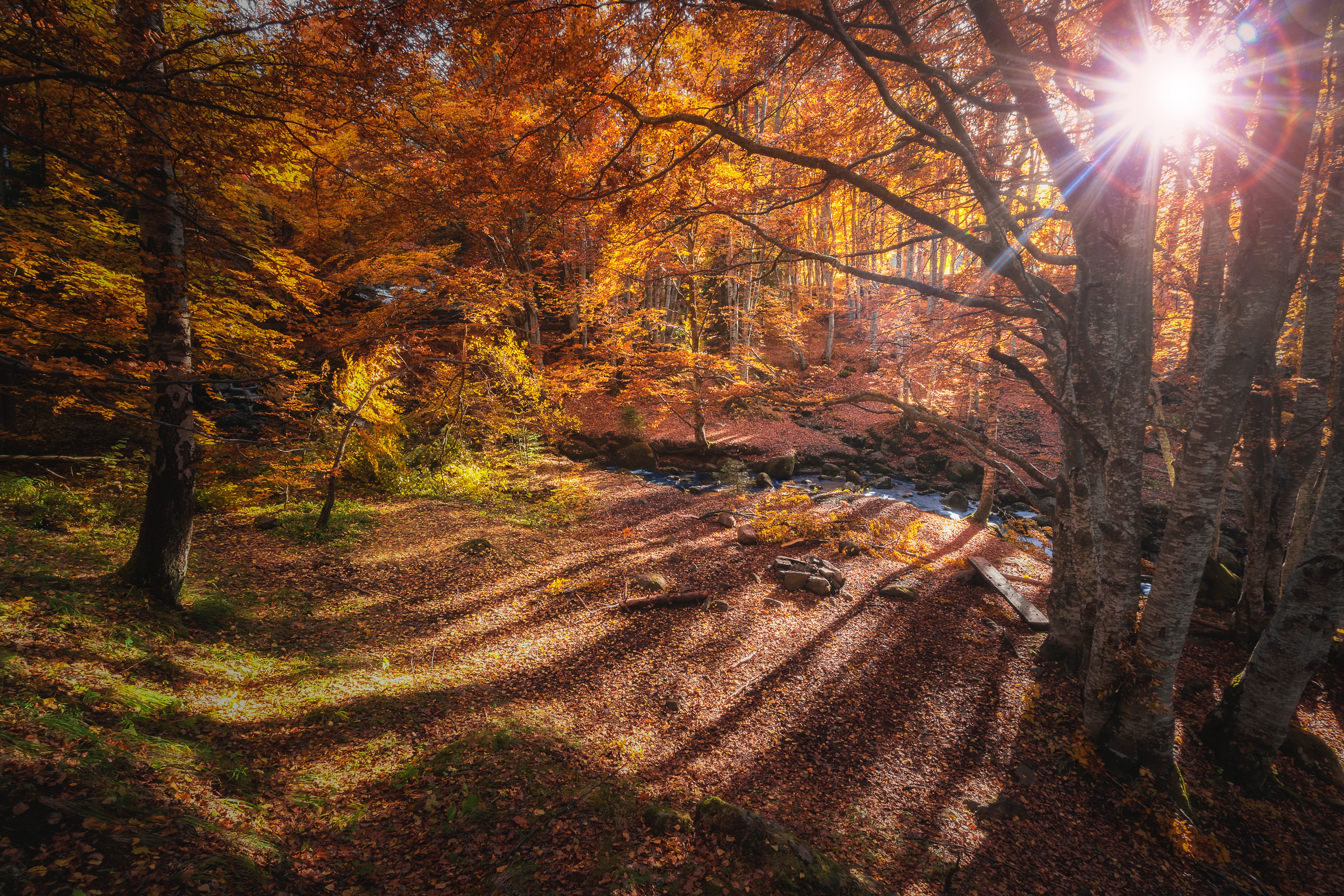By Chris Deliso
In a country of 7 million people, it’s easy for Bulgaria’s 70,000 Catholics to be overlooked, in comparison to the majority Orthodox and minority Turkish Muslim populations. Nevertheless, as a visit to Bulgaria’s capital of Sofia reveals, Catholicism is both deeply rooted and increasingly active today.
As Serdica – Sofia’s ancient name – the city was a strategic crossroads for commerce, travel and military expeditions. It and Philippopolis, now Plovdiv in south-central Bulgaria, hosted some of Europe’s first churches, established by disciples of Apostles Paul and Andrew. In 311, Emperor Galerius’ Edict of Serdica gave conditional tolerance to Christianity, and later on Emperor Constantine the Great, the ruler most credited with promoting Christianity, referred to Serdica affectionately as “my Rome”. And the Council of Serdica in 343, which reasserted the Nicene Creed during the Arian Controversy, further exemplified the city’s role in key events of ancient Christianity.
Serdica’s sophisticated ruins are visible throughout central Sofia. They include everything from well-lit underground chambers filled with artefacts to open sites-in-progress filled with crumbling mazes of former Roman homes. Some ruins, in fact, stretch right up to the Church of St Joseph, Sofia’s major Catholic landmark, and itself entirely rebuilt between 2002-2006. RAF pilots had flattened it in WWII, when Bulgaria was allied with Germany.
Bulgaria’s post-war ruling Communist Party had eyed the demolished church site for its headquarters. However, in an amusing twist, apparatchiks were put off by broken sewage pipes beneath the ruins, and the party looked elsewhere. Some devout Catholics, like retired history professor Esmeralda Kamburova, see this as a sign from God. “The site of the church was spared,” she says, “so that it would be saved, to return in the future.”
Clearly proud of her city and its place in Christian heritage, Esmeralda takes us on a mini-tour of ancient Serdica, with ruins interspersed throughout the bustling modern city centre. Traffic whizzes by on broad boulevards lined by shops and imposing buildings as we strain to hear her explain everything from the first Apostles, and Khan Boris’ Byzantine baptism in 865, to the 1861 Bulgarian initiative for Church reunion and John Paul II’s 2002 visit. Was she able to meet the beloved pope then? “Oh, I knew him back when he was still a cardinal,” she replies.

Indeed, Esmeralda doesn’t need to follow the prayer book at Sunday’s Latin Mass; she has it well-memorised. This rather unexpected Sunday service attracts around 100 parishioners, everyone from regular Bulgarians to foreign diplomats. Sofia’s Italian community had requested the Latin Mass, early in the present century. Along with regular masses in Bulgarian and in English, with the latter, in a nearby chapel, St Joseph’s also hosts Polish-language services for that community.
Indeed, these two Slavic peoples share an historic affinity, one that was reinforced with John Paul II’s visit. Bulgarians felt honoured to receive the charismatic Polish pontiff. And they also appreciated it when, speaking of old rumours concerning the 1981 assassination attempt, the pontiff said: “I never believed in the so called Bulgarian connection because of my great esteem and respect for the Bulgarian people.”
The Pope’s visit significantly impacted Bulgarian Catholicism. The state was then still reluctant to part with certain valuable central real estate, and official permission to rebuild St Joseph’s was granted just a day before John Paul arrival. Today, this gleaming, voluminous church is overseen by Fr Iaroslav Babik, a Polish priest from the Order of Capuchin Friars Minor. The Order originally came to Bulgaria in 1841, near the end of Ottoman Muslim rule, following Pope Gregory XVI’s personal appeal. Since then, the Capuchins have managed to survive the vicissitudes of war and religious repression. In 1992, not long after democracy’s arrival, Capuchin leaders asked the Church in Krakow to send priests to Bulgaria. In 1999, the custody of Sofia and Plovdiv fell under the jurisdiction of that Polish diocese.
Fr Iaroslav recounts his journey to Bulgaria, which remains true to the Capuchin Order’s original mission. “Eight year ago, my master in Poland told me priests were missing in Bulgaria,” he says. “There are only 40 Catholic priests here. So I don’t want to go back to Poland, where it is full of priests. I am needed more here.”
In his office inside the church, Fr Iaroslav discusses the history and current activities of local Catholicism in flawless Bulgarian, a feat made somewhat easier by the fact that both Bulgarian and Polish belong to the Slavonic language family. And in both countries Catholics endured persecution, while politically allied under communism and the Warsaw Pact. However, Father Iaroslav notes that Bulgaria’s Catholics suffered far worse persecution than did those in his native Poland. When communists took power, “all monks had three months to leave Bulgaria,” he recounts. Three priests and an archbishop were killed by the communist regime, including Capuchin Friar Fortunat Bakalski, editor of a Catholic magazine. “He was imprisoned and killed because he refused to publish communist propaganda.” Fr Iaroslav adds that it is still unknown where Bakalski was buried. The process for his beatification began in 1985.
Today, Christianity in Bulgaria and beyond is being challenged not by communism but by secularism and a vague liberalism that rests on moral relativism and rhetoric. During a Mass in late January, Fr Iaroslav emphasised the Bulgarian Catholic Church’s disagreement with the controversial Istanbul Convention of 2011. While ostensibly opposing violence against women, the Convention also presents gender as a socially constructed rather than biological reality. An official letter of 23 January from the Apostolic Exarch of the Catholic Church in Bulgaria, Hristo Proikov, details the Church’s opposition to the Convention. The concept of socially-constructed gender beliefs is opposed by the general Catholic Church, the Orthodox and other religious groups. Alluding to the seemingly innocuous language of the Convention, the Polish priest makes a metaphoric comparison: “In this case, what seems to be a beautifully-wrapped present is very different when you open it.”
As such initiatives become further institutionalised worldwide, Fr Iaroslav reaffirms that parents have the right to prevent their children from being “indoctrinated” into such beliefs by public institutions. He also points to the ballot box as the place where Christians can turn to make their voices heard on sensitive topics such as this.
Pointing out the case of two Bulgarian women who went to England to be married, Fr Iaroslav notes that the Bulgarian court rejected their subsequent request to be registered as married. “Some would like to portray Bulgaria as intolerant,” he says. “But if you see that within a half-kilometre we have a Catholic and Orthodox church, as well as a mosque and synagogue, you can see this is a very tolerant society.” He stresses how the Church is open to all. It continues its outreach work, especially among marginalised communities like the Roma. Catholicism here has also benefitted by literally being more visible. St Joseph’s Church is located in Sofia’s centre, and thus has drawn increasing interest from passers-by since opening in 2006. Fr Iaroslav notes that about 40 Bulgarians are now converting from Orthodoxy to Catholicism. He notes that the Catholics’ perceived closeness with the people and devotion to their daily needs is winning them respect among everyday people.
 This resurgence is personified by people like forty-year-old Yanko Marinov, who takes us high up into St Joseph’s back balcony, where stands his splendid, three-manual organ. But Yanko is not just any church organist. A graduate of Bulgaria’s Music Academy, he holds a PhD in Byzantine liturgical music, and has students of his own. Yanko carefully unfurls copies of important mediaeval music manuscripts, illustrated with the inscrutable notational systems of the Byzantines, while explaining the contributions of famed monks and composers. He points out the distinctions between the instrumentation used in Catholic and Protestant liturgical music, and Orthodoxy’s exclusive use of choir, with no instruments allowed.
This resurgence is personified by people like forty-year-old Yanko Marinov, who takes us high up into St Joseph’s back balcony, where stands his splendid, three-manual organ. But Yanko is not just any church organist. A graduate of Bulgaria’s Music Academy, he holds a PhD in Byzantine liturgical music, and has students of his own. Yanko carefully unfurls copies of important mediaeval music manuscripts, illustrated with the inscrutable notational systems of the Byzantines, while explaining the contributions of famed monks and composers. He points out the distinctions between the instrumentation used in Catholic and Protestant liturgical music, and Orthodoxy’s exclusive use of choir, with no instruments allowed.
“Byzantine chant is in some ways similar with the Gregorian one,” says Yanko, as he fires up the organ and takes off his shoes, to better navigate the many pedals. The enormous instrument is fronted by long rows of buttons that turn a dull yellow when pressed, the whole contraption resembling the console of a Cold War-era supercomputer.
Yanko was a pianist before taking on what he calls “the bigger challenge” of the organ. Since becoming organist at St. Joseph’s, Yanko has relished in this new role. He perceives music as a sort of bridge “between human and God, which is the source of harmony in the world.” Four years ago, Yanko fell ill with Lyme Disease from a tick bite, an increasing problem in heavily-forested Bulgaria, and remains on antibiotics. Nevertheless, he says, music provides an additional source of strength that helps alleviate the suffering of the disease.
“How about a fugue by Bach?” he asks politely. We readily agree. As the organist fills the church with resonant tones, eventually melding into the Ave Maria, dappled sunlight streams through the stained glass windows, spreading across the empty church’s spotless walls. It is quite a venue for a private concert; and a moving tribute to Bulgaria’s enduring Catholic tradition.
Pix: 1. Bulgaria is still heavily forested. The top photo by Veliko Karachiviev on Unsplash shows autumn at Vitosha mountain, Sofia. 2: The gleaming interior of the rebuilt St. Joseph's Church, illuminated by afternoon sunlight. 3. Yanko Marinov, the church's organist with a PhD in Byzantine ecclesiastical music. Second two pix by Chris Deliso



 Loading ...
Loading ...
What do you think?
You can post as a subscriber user ...
User comments (0)